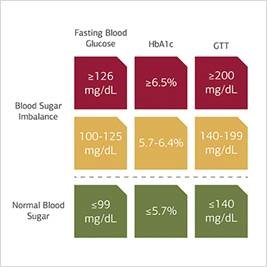Blood Sugar Levels: What They Mean, How to Check Them, and What a Normal Blood Sugar Level Is [Chart]
Blood sugar levels are a measure of the sugar circulating throughout the body through the bloodstream. They are affected by factors such as food, exercise, sleep, and stress. Healthy blood sugar levels can positively affect many systems of the body, such as providing fuel to cells and maintaining healthy metabolism and homeostasis. On the other hand, unhealthy blood sugar levels can cause unpleasant symptoms and dysregulated metabolism.
How to Measure Blood Sugar Levels
At home, you can use glucose test strips and a glucose meter to determine your blood sugar levels. To do this, you simply prick your finger and load a small drop of blood into the glucose meter. This produces your current blood sugar levels but does not provide any information about trends or previous readings. When using this method, it is important to take into consideration what you’ve been doing before you test your levels. Measuring them after a meal or workout can have a big impact.
Alternatively, you can have a doctor or medical staff assess your blood glucose levels. This will typically be a fasted assessment, meaning you’ll have to avoid food and beverages (other than water) for at least eight hours prior to having your blood drawn and tested. This assessment can help establish your true blood glucose status with no interfering effects from food.
In some situations, a healthcare professional may order a glucose tolerance test (GTT). In this test, you arrive fasted, have your blood drawn, and then consume a sugary beverage in a short timeframe. Your response to a set amount of glucose is measured over three hours as a way to assess how your body handles a relatively large dose of sugar. Under healthy conditions, blood sugar levels should rise quickly but return to normal by the end of the assessment time. If blood sugar levels rise too high or stay elevated for too long, it could indicate some degree of blood sugar imbalance.
Your HbA1c, also called glycosylated hemoglobin, is a measure of blood sugar levels from the three months prior to the assessment. When sugar enters your bloodstream upon digestion, some of it reacts with the protein hemoglobin in red blood cells in a process called glycosylation. The more sugar that is in the blood, the greater degree of glycosylation. Because red blood cells live for approximately three months, measuring HbA1c is indicative of blood sugar levels over that time span.
So now we know a few different ways to measure blood sugar levels. But how can we tell if they’re in a normal range?
Chart: What Normal Blood Sugar Levels Are
The American Diabetes Association defined the current benchmarks for blood sugar targets in 1997, which have been adopted by other agencies including the CDC and WHO.1-3 The most reliable measures are fasting blood glucose and HbA1c because they are less responsive to recent food intake. A normal blood glucose measure is:

- <99mg/dL for fasting blood sugar
- <5.7% for HbA1c, and
- <140 mg/dL for a glucose tolerance test.
Borderline glucose imbalance occurs at 100-125 mg/dL for fasting blood sugar, 5.7-6.4% for HbA1c, and 140-199 mg/dL for a GTT. Values about these cut-off points may indicate blood sugar imbalance or dysregulated blood sugar metabolism.
Beyond numbers, it's important to understand what to expect when measuring blood sugar levels. For example, you shouldn’t expect to have constant blood sugar levels 24 hours a day. Blood sugar depends on many factors, so it’s normal to have dips and peaks throughout the day. After a meal, especially one containing carbohydrates, you should expect your blood sugar to rise. The overall goal in blood sugar management is to keep your blood sugar levels relatively steady- meaning spikes and dips within a normal range. If you zoom out a bit, the line looks much steadier, and that’s the goal.
Things to look for in a “normal” blood sugar spike:
- A trigger that caused the spike, such as eating a carbohydrate containing meal
- A blood sugar peak not greater than 180-200 mg/dL
- Return to baseline levels within two hours
- Absence of a dip far below baseline levels
It’s also important to understand the impact of blood sugar levels on health. Staying in a blood sugar target range can help improve energy and mood as well as support overall health. Cells in the body require glucose, or sugar, to function- it’s an important source of cellular energy. But too high or too low blood sugar levels can negatively impact health.4 Without enough glucose, cells throughout the body cannot function properly. On the other hand, blood sugar that is elevated consistently over time can cause damage to blood vessels throughout the body, affecting tissues and their functions.4 Over time, uncontrolled, elevated blood sugar levels can continue to damage cells and organs in the body.4
Measuring and understanding blood sugar levels is just the beginning. We’ve answered the top questions people Google about blood sugar, answered by doctors. Check it out here.
References
- Report of the Expert Committee on the Diagnosis and Classification of Diabetes Mellitus. Diabetes Care. 1997 Jul;20(7):1183-97. doi: 10.2337/diacare.20.7.1183. PMID: 9203460.
- Wareham, N.J. (1998). BMJ- Brit Med J, 317:359.
- World Health Organization. (1999).
- Deshpande, A.D., Harris-Hayes, M., Schootman, M. (2008). Phys Ther, 88(11):1254.








